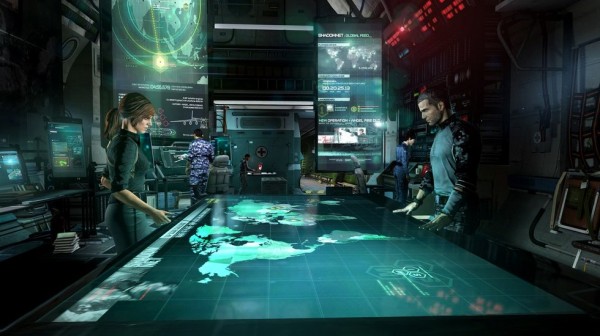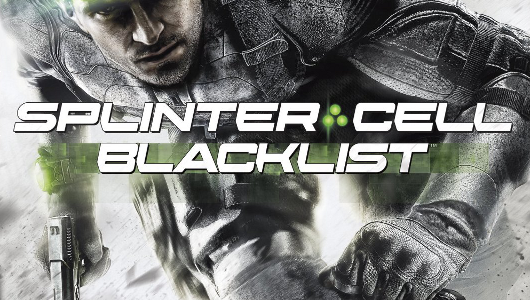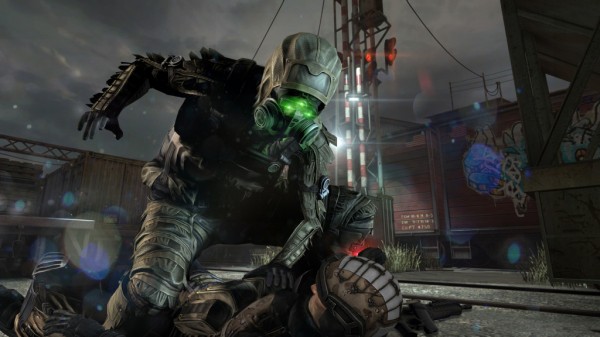Do I take this guy out or sneak around him?
That’s the question I asked myself multiple times during the campaign of Splinter Cell Blacklist. Plenty of soldiers blocked my path throughout the adventure, but not once was there a clear answer to the question. I could choose to sneak Sam Fisher around the hallway to the side, avoiding all contact, or I could reload my favorite assault weapon and start shooting. Progression was all up to me, and it’s one of the reasons I enjoyed the game so much.

With 2010’s Splinter Cell Conviction, longtime fans of Splinter Cell bemoaned a departure from the stealth-centric approach of the earlier games, lamenting the new action-based turn Sam and his friends were taking. Blacklist allows them to once again stalk through the shadows, but doesn’t ignore the newer players who prefers to shoot everything that moves. The compromise is in the post-mission scoring system, split into three parts: Ghost points award complete stealth, Panther points recognize killing while undetected, and Assault points are for exactly that: all out assault.
The three-pronged approach not only rewards differing approaches, but also encourages multiple playthroughs to master each of the three ranks. Unfortunately, the story of Blacklist doesn’t do much to reinforce that desire. You’ll never guess what happens: terrorists do bad things, and Sam Fisher has to stop them by traveling all over the world and thwarting their plans. Some locations seem like they were picked on purpose (I’m looking at you, Benghazi), others are finally getting some time in the digital spotlight (PHILADELPHIA, YES), and the rest are standard shooter locations (two missions in the Middle East).
Dialogue doesn’t help either: I certainly hope you all know military jargon, because Blacklist throws it around as much as Call of Duty or Battlefield. I had to actually look up some terms so I knew what they were saying, and that’s just silly. Despite my issues, there are a few welcome narrative twists, including a point when the terrorists actually succeed in one of their plans (to an extent) and we watch how Sam and company deal with it, but otherwise this tale is nothing we haven’t heard before.
The campaign problems are far outweighed by the excellent multiplayer, which is the coolest online experience I’ve had since Assassin’s Creed Brotherhood (another Ubisoft ga; apparently Ubi understands multiplayer). Each campaign mission unlocks new Fourth Echelon side missions, all of which can be completed cooperatively with a friend. Some are even co-op only. While they’re fun to play, I was able to complete the campaign before trying my hand at the co-op missions and didn’t see any change in the story. They’re there to gain extra weapons and in-game currency for upgrades, and I feel that I would have appreciated them more if they affected the sequence of events a la Mass Effect 3.
The competitive multiplayer, however, is when things get GOOD. Spies vs. Mercs returns in a big way; I’d say this and the expanded Blacklist mode are worth the price of the game by themselves. The 2v2 combat of Spies vs. Mercs had some of the most tense and heartpounding matches I’ve ever played online, focusing on working with your teammate against the other pair rather than just deathmatch-style rules. I could barely put it down. I enjoyed the 4v4, fully customizable Blacklist mode, too, but Spies vs. Mercs is the true star on this disc.
Splinter Cell Blacklist isn’t revolutionizing the third-person action genre, it’s not setting any records or taking home buckets of awards, not in the year of Grand Theft Auto V, The Last of Us, BioShock Infinite, and Luigi. However, it’s still a fun game worthy of the Splinter Cell name, and you’ll love stealthing or shooting your way through yet another group of nefarious terrorists. Plus you get to see the beautiful Philadelphia skyline while fighting on top of a speeding train, and that’s a true sight to behold.
Just be ready to ask yourself this as you play: do you take everyone out or sneak around them?



















